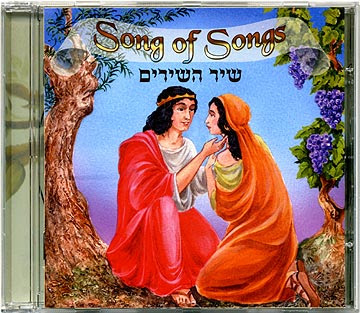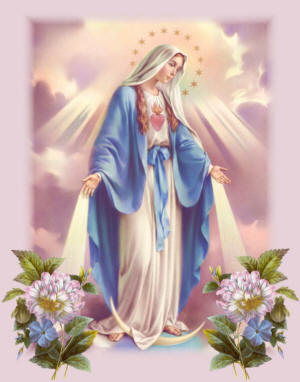Christ, the Fairest of All Men III: Song of Songs
Our meditations on Song of Songs ended at the 7th
verse of the first chapter, where the “lovely” Bride poses a question to her
lover. She asks, “Why should I be like a veiled woman beside the flocks of your
friends?”
 |
| Song of Songs: Christ and His Church |
In this post, let’s look at the next four verses.
8 If you do not know, most beautiful of women, follow the
tracks of the sheep and graze your young goats by the tents of the shepherds.
9 I liken you, my darling, to a mare harnessed to one of the
chariots of Pharaoh.
10 Your cheeks are beautiful with earrings, your neck with
strings of jewels.
11 We will make you earrings of gold, studded with silver.
The speaker in these four verses is the Bridegroom, who is
responding to the question posed to him earlier regarding the whereabouts of
his “flock” (1:7). Earlier, we
stated that the Bride’s love for her Bridegroom seems to be secretive and
unpublicized. Consequently, she goes about hidden and “veiled” so as not to
reveal her identity to the world (1:7). Moreover, there is a sense of having
lost the tracks of the Beloved; meanwhile, she is surrounded by the
Bridegroom’s “friends.” These “friends” do not satisfy her longing for the
Beloved. They are called “friends” of Christ in the same sense that Christ
called Judah a “friend” (Mathew 26:50). These friends do not really know Christ
because they have either strayed away doctrinally to join the folds of the
heretics and schismatics, or they have the sound doctrine but do not conform
their lives to the Gospel for leading a duplicitous and hypocritical lifestyle.
For this reason, the Bride yearns for the “Good Shepherd,” the one who will
nourish and feed his sheep (John 10:11).
He responds to her question and says:
“If you do not know, most beautiful of women, follow the
tracks of the sheep and graze your young goats by the tents of the shepherds.”
Beginning with verse 8, and for the first time, we hear the
Bridegroom speaking. He labels his Beloved as the “most beautiful of women,” a
description that stands in direct contrast to the attitude of the “daughters of
Jerusalem” who “stare” at the Bride, repulsed at her “dark” skin (v.6). That which may seem hideous and
unattractive to the eyes of the world, may be “beautiful” and appealing to the
eyes of God, who looks not at the beauty of the flesh but rejoices in the
sanctity of the soul, which conforms its “image” to that of Christ (Genesis
1:27). Conversely, the world holds
in high esteem people with pleasing physical qualities that do not necessarily
reflect their deplorable inner condition, which is fully visible only to the
eyes of God. In effect, the
Bride becomes a mirror, which reflects the beauty of her Bridegroom. For this
reason, despite being “dark” on the outside, the Bride sees herself as “lovely”
as the “tent curtains of Solomon” (v.5).
The Lover’s advice for his Beloved is to “follow the tracks
of the sheep.” The “sheep,” whose “tracks” the Bride must follow, are the
Saints, whose “faith” we must “imitate” after considering the “outcome of their
life” (Hebrews 13:7). They are those whose “example” we must “follow” as a
“model” or a pattern to be imitated and repeated (Philippians 3:17). Does this
take away from the glory of God in any way? No, of course not. It does not
detract from the glory that is due to Christ because we only “imitate” those
“sheep,” which trod the “path,” in so far as they imitate and “follow the
example of Christ” (1 Corinthians 11:1).
In due time, these “sheep” turn into “shepherds” by the virtue of the
saintly life they lead. It is only fitting that we “graze by the tents” of
these faithful “shepherds.” Christ’s exhortation to his Beloved, the Church, is
to remain under the ministry of her shepherds rather than breaking off to form
a schism or a breakaway group. The Bridegroom goes on to say:
9 “I liken you, my
darling, to a mare harnessed to one of the chariots of Pharaoh.”
In our postmodern and thoroughly deconstructed world, this may not seem much of a compliment. However, in ancient poetry, human beings, both men and women, are often compared to certain animals. Thomas Wyatt compares beautiful women who could be potential lovers, to “hinds” or female deer (Whoso list to hunt). In the comparison above, King Solomon uses an analogy to describe the beauty and physical attraction of his beloved. The effect of mares on stallions is identical to the effect of the Bride on other men. Pharaohs only used the healthiest and most vigorous of horses. Thus, the comparison is made to denote the gracefulness and beauty of the Beloved. When a mare is placed in the midst of stallions, she becomes a great distraction to the stallions. Likewise, the beauty and attractiveness of the Beloved are so great, that all men are occupied and wholly taken by her looks.
In our postmodern and thoroughly deconstructed world, this may not seem much of a compliment. However, in ancient poetry, human beings, both men and women, are often compared to certain animals. Thomas Wyatt compares beautiful women who could be potential lovers, to “hinds” or female deer (Whoso list to hunt). In the comparison above, King Solomon uses an analogy to describe the beauty and physical attraction of his beloved. The effect of mares on stallions is identical to the effect of the Bride on other men. Pharaohs only used the healthiest and most vigorous of horses. Thus, the comparison is made to denote the gracefulness and beauty of the Beloved. When a mare is placed in the midst of stallions, she becomes a great distraction to the stallions. Likewise, the beauty and attractiveness of the Beloved are so great, that all men are occupied and wholly taken by her looks.
10 Your cheeks are
beautiful with earrings, your neck with strings of jewels.
11 We will make you
earrings of gold, studded with silver.
Detailing the beauty of the Bride, the Bridegroom goes on to
describe her features. Her “cheeks
are beautiful” because the beauty of Christ has been imprinted on her features.
It is only with “earrings” that her beauty is pronounced and made visible,
signifying that apart from Divine intervention, the Bride’s looks are not
complete and lack the pleasing appearance that is often associated with a young
lady at her own marriage ceremony. The same applies to her “neck,” which is
only made beautiful by the “strings of jewels.” To emphasize the role of the
Divine in adorning the Bride, the Bridegroom declares in the following verse
“We will make earrings of gold.” The maker of the “earrings” is God, Who
bestows His virtues and gifts upon His Church. All ornamental objects discussed
thus far represent the virtues or the gifts of the Holy Spirit that are given
to the recipient of the Sacrament of Confirmation. This is further solidified in the words of God as He speaks to
Israel through the Prophet Ezekiel:
“I clothed you with an
embroidered dress and put leather sandals on you. I dressed you in fine linen
and covered you with costly garments. I adorned you with jewelry: I put
bracelets on your arms and a necklace
around your neck, and I put a ring on your nose, earrings on your ears and a beautiful crown on your head. So you
were adorned with gold and silver, your clothes were of fine linen and costly
fabric and embroidered cloth” (Ezekiel 16:13).
The Gifts of the Holy Spirit are seven in total. They
include wisdom, understanding, counsel, fortitude, knowledge, piety, and fear
of the Lord. Seven centuries prior to Christ, Isaiah prophesies about a “stump
of Jesse,” from whose “roots a Branch will bear fruit” (Isaiah 11:1). On this “Branch,”
the “Spirit of the Lord shall rest; the spirit of wisdom and of
understanding, the spirit of counsel and of fortitude, the spirit of knowledge
and of godliness. And he shall be filled with the spirit of the fear of the
Lord” (Isaiah 11:2, 3). Those who receive the gifts of the Holy Spirit in the
Sacrament of Confirmation are made more docile to the will of the Lover and
more obedient to His voice.
We end our reflections on the verses above with a prayer
imploring Our Lover to intensify His love for us and stir in us a spirit of
obedience, righteousness and docility to His will in our lives, in Christ’s
name.



Comments
Post a Comment